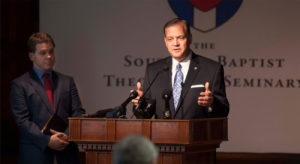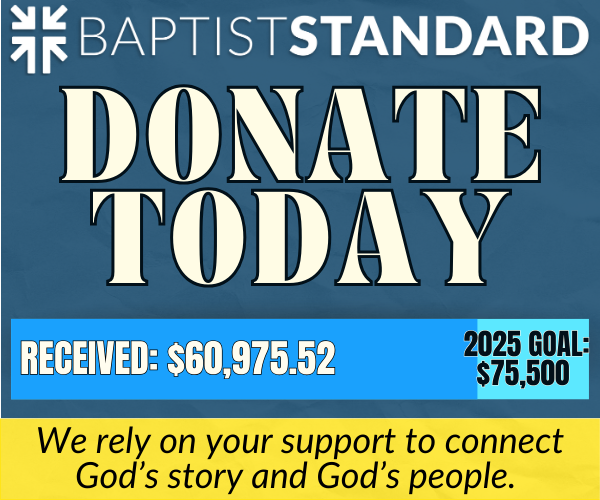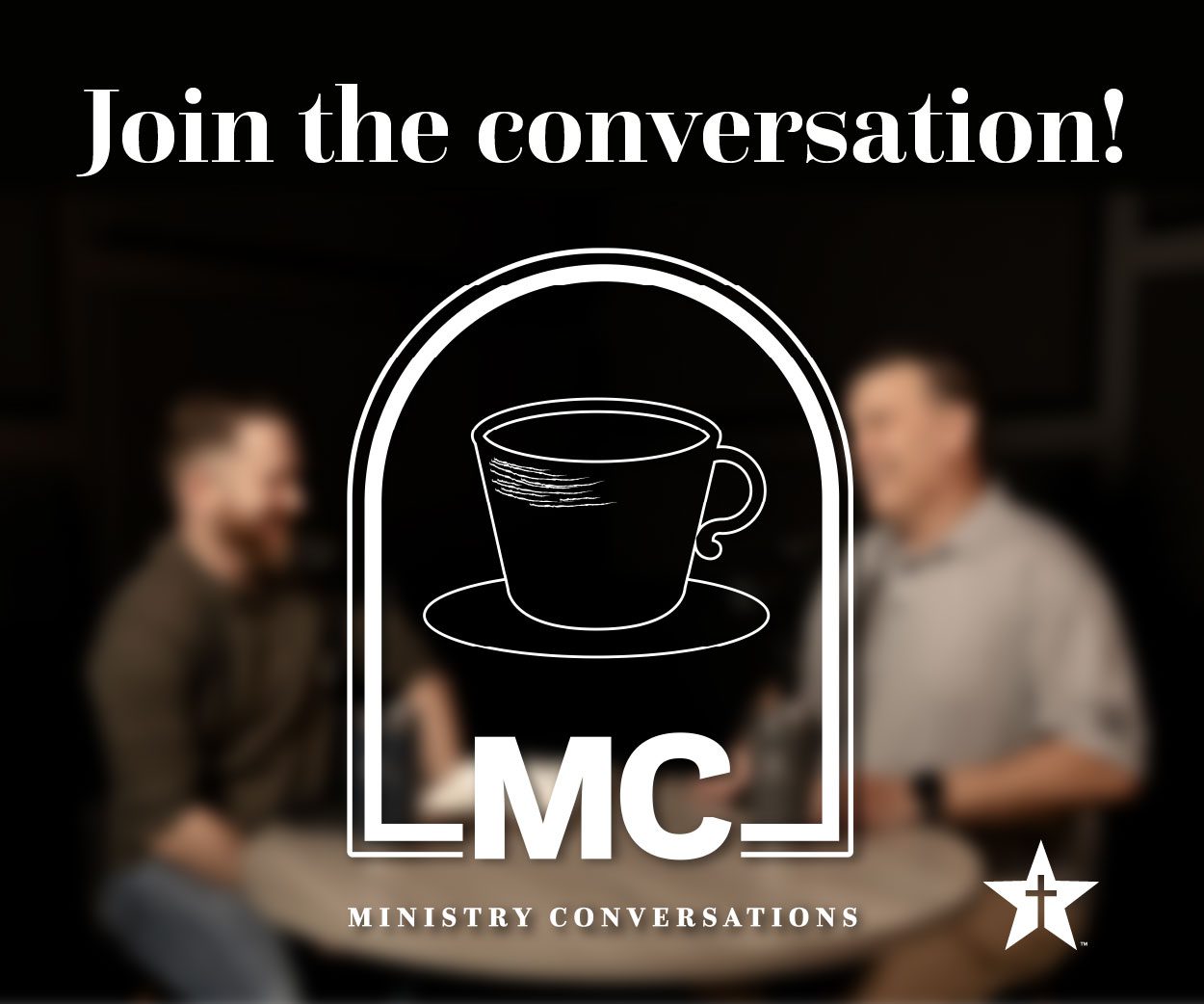WASHINGTON (RNS)—Southern Baptists long have disagreed over many things—from the role of women in the church and which Bible translation is best to debates over Calvinism and whether people who were baptized in a non-Baptist church can join a Baptist congregation.
Despite disagreements, affiliating with the Southern Baptist Convention historically has been relatively easy for churches. And getting kicked out was difficult.

“In Southern Baptist life, basically you are deemed in until you have proven that you are out,” said Adam Greenway, former president of Southwestern Baptist Theological Seminary.
The issue of who gets to be a Southern Baptist made international headlines after the SBC Executive Committee voted to oust one of the nation’s largest and best-known churches for having a woman preaching pastor.
On Feb. 21, Saddleback Church in Lake Forest, Calif., was “deemed not to be in friendly cooperation” with the SBC for having Stacie Woods—wife of senior pastor Andy Woods—as a regular preacher.

Her role conflicts with a section of the denomination’s statement of faith, the 2000 version of the Baptist Faith and Message, which restricts the office of pastor to men. Saddleback previously had been reported to the SBC’s credentials committee, which reviews the status of churches, for ordaining several longtime women staffers in 2021.
Four other churches also were removed for having women pastors, including New Faith Mission Ministry in Griffin, Ga., whose pastor has since claimed the church was not part of the SBC.
Those congregations were the first to be expelled from the SBC on a national level for having women pastors since the ban on women pastors was instituted more than two decades ago.
More likely at state or associational level
Churches have been removed in the past from Baptist state conventions or local associations for having women pastors. In 2009, the Georgia Baptist Convention disfellowshipped First Baptist Church of Decatur for hiring a woman pastor, then followed up in 2010 by kicking out Druid Hills Baptist Church for the same reason.
In 2015, a Tennessee Baptist local association removed Greater Tabernacle Missionary Baptist Church in Lawrenceburg for having a woman pastor.
Greenway said disputes over the status of churches are more common at the local or state level, because people in those settings are more likely to know what other churches are doing. With more than 40,000 churches, that’s less likely at the national level of the SBC.
Local or regional groups often have different rules for how closely churches have to follow their doctrines. Some require churches to completely agree with the Baptist Faith and Message. Some use other statements of faith.
At the SBC level, the rules have been more flexible. Founded in 1845, the denomination didn’t have an official statement of faith until 1925. That same year, the SBC started the Cooperative Program, which pools money from churches to fund missions, seminaries and other ministries around the country.

“That’s not an accident,” said Bart Barber, current SBC president and pastor of First Baptist Church in Farmersville, who has spent years studying SBC polity. Before 1925, local churches that identified as Baptist funded individual SBC institutions and causes.
Once they pooled their money, a more detailed statement of faith was needed.
“There needed to be more trust,” he said.
The disputes over churches often play out at annual meetings, when one church tries to block another from participating. And the issues involved have varied widely.
In 1977, the California state convention rejected messengers from a Fresno church that practiced alien immersion and “open Communion” and debated those issues for years. So did Baptists in Kentucky and Arkansas.
California Baptists also refused to recognize a church in Corona in 1980 after it dropped the word “Baptist” from its name and a church in 1993 that had a woman pastor.
Cutting ties at the SBC level picks up steam
Those state and local meetings were often smaller, making it easier for the question of kicking out a church to get on the agenda. That is harder at national SBC meetings, which have at times drawn tens of thousands of messengers.
By the 1990s, however, fights over kicking out churches had gone national, largely over the place of LGBTQ people in the church. In 1992, the Baptist Faith and Message was changed to bar churches that affirmed LGBTQ members and clergy. Those changes happened in the wake of the so-called Conservative Resurgence when more moderate Baptists began to leave.
Those changes led to a series of churches being removed for being affirming, beginning with Pullen Memorial Baptist Church and Olin T. Binkley Memorial Baptist in North Carolina. Both were voted out at the SBC’s annual meeting.
Though the language of having only male pastors was added to the Baptist Faith and Message in 2000, Southern Baptists repeatedly resisted calls to add language to the denomination’s constitution to bar churches with women pastors.
Changes in the SBC constitution
However, in 2014, the denomination’s constitution was amended to include only churches with “a faith and practice which closely identifies” with the Baptist Faith and Message. That 2014 rule change opened the door for more churches to be removed from the SBC, including for issues like racism and mishandling sexual abuse.
As part of additional rules passed in 2019 to name those issues, the credentials committee was given the job of deciding whether or not a church is in “friendly cooperation” with the denomination.
At the 2018 annual meeting, messengers expelled Raleigh White Baptist Church in Georgia for discriminating against a Black church that shared their building. Two years later, Ranchland Heights Baptist Church was disfellowshipped for employing a registered sex offender as pastor.
The push to disfellowship churches with women pastors—that have women preaching in them—gained momentum in 2019 after former Southern Baptist Bible teacher Beth Moore tweeted about speaking in a church on Mother’s Day.

That led to outrage by SBC leaders like seminary President Al Mohler, who had helped draft the Baptist Faith and Message changes two decades earlier. The debate was intensified by the country’s increased polarization, which has eroded much of the trust that made the SBC’s work possible in the past.
Things came to a head in May 2021 after former Saddleback senior pastor and bestselling author Rick Warren announced that the church had ordained several women as pastors. Not long afterward, a messenger at the 2021 SBC meeting called for the church to be investigated.
Who is a pastor?
Kicking out Saddleback was not a simple matter.
Some Southern Baptists, like Mohler, say no woman can have the title of pastor. Others say that only the senior pastor role is limited to men alone, while other women on a church staff could be referred to as pastors.
This disagreement left the credentials committee in a pickle, since they did not know exactly how the beliefs about pastors should be applied. At the 2022 SBC meeting in Anaheim, Calif., Linda Cooper, chair of the credentials committee, asked messengers to form a study group to look at how local churches use the term “pastor.”
That request led to heated debate, with Mohler insisting Southern Baptists know exactly what the word “pastor” means, while Greenway supported the idea of a study group, saying it should be expanded to look at how closely churches need to follow the SBC statement of faith.
For example, Greenway, a former seminary president, said in a recent interview the Baptist Faith and Message states the Lord’s Supper should be limited to church members. But few churches, he said, follow that rule strictly.
“That might be the ‘most not observed’ article in the Baptist Faith and Message,” he said.
In an interview and on social media, Greenway disagreed with the Saddleback vote, saying it put too much power in one interpretation of the Baptist Faith and Message.
Giving churches a say in the matter
Barber said voting Saddleback out was the only way for local church messengers to have a say in the matter.
SBC rules allow two options for challenging a church’s status. If a messenger does so at an annual meeting, the credentials committee can either rule immediately or take time to look into the matter, Barber said. If they decide against an immediate ruling, then the committee makes a recommendation to the Executive Committee.
If anyone disagrees with the recommendation, they can start the process over again.
Now that the Executive Committee has voted out Saddleback, they or another of the other disfellowshipped churches can appeal to the upcoming annual meeting this June in New Orleans. Saddleback is expected to appeal, setting up a vote on the issue.
“In June, we will find out what the messengers feel about Saddleback having a woman pastor as part of the regular preaching team,” Barber said.















We seek to connect God’s story and God’s people around the world. To learn more about God’s story, click here.
Send comments and feedback to Eric Black, our editor. For comments to be published, please specify “letter to the editor.” Maximum length for publication is 300 words.